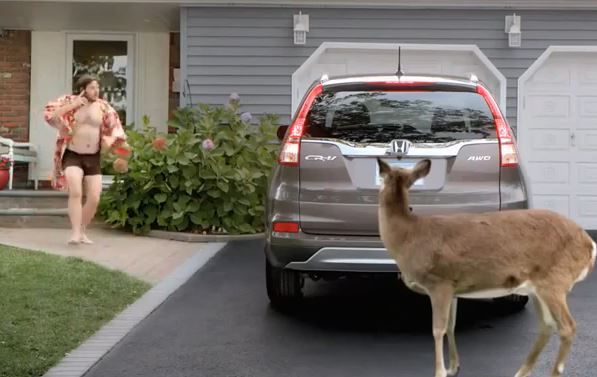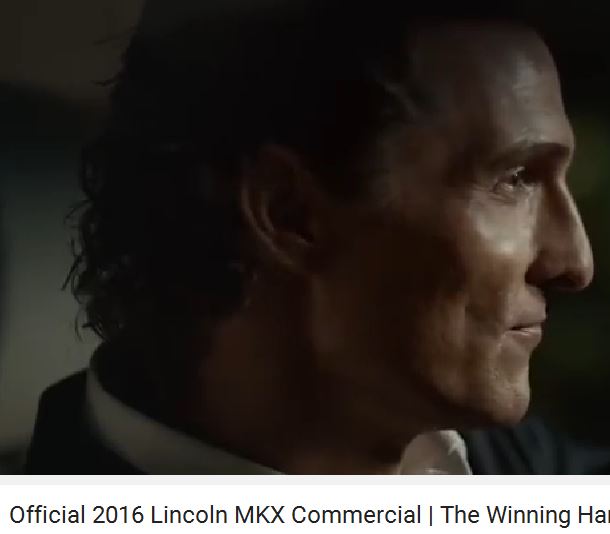Why do people on the left think American media is right wing? Because journalists are paid by corporations funded by other corporations? Why do people on the left think journalism is right wing? Because journalists go into the field to make a difference rather than to talk about news or events or science, and when people want to be important, they become activists.
And controlling media works.
While many groups find media bias to be a negative, social psychologists say it can be a benefit; by getting them to produce positive content or conciliatory messages about ethnic groups and genders.
Improving Perceptions
From sitcoms to music videos to commercials, media offers a reflection of parts of American culture. When is the last time you saw a white adult male being competent at something? Instead, fathers and husbands are invariably reflect as idiots - only single men get a positive take.
 |
 |
On the left, the stereotype of fathers and husbands, a guy wearing his wife's robe while she goes off to work. On the right, single men are always returning from a poker game wearing a tuxedo. Credit: Honda and Ford Motor Co.
To show how media is used to change perception (and to assist in social engineering) Sohad Murrar, a social psychologist at University of Wisconsin-Madison, provided college students with a sitcom that showed relatable Arab/Muslim characters. When compared to watching a similar show with an all-white cast, seeing the more diverse and relatable cast showed reduced prejudice on surveys four to six weeks later.
In a second experiment, the college students watched a short music video that portrayed relatable Muslims and Murrar says it showed less prejudice than participants who had completed a number of other prejudice interventions.
"Entertainment media, in addition to being scalable, are likely to be one the most effective ways to improve intergroup relations and promote diversity," stated Murrar.
Promoting Social Agendas
Finding new ways to solve conflict amongst and between groups is an important part of providing a more stable social and political environment. Yeshim Iqbal, New York University, examined the effectiveness of role-modeling prosocial, or helpful, behavior.
Using a field experiment in the Democratic Republic of Congo, the team created two versions of a fictional show; in the experimental condition (role-modeling), the fictional characters discussed community grievances and planned collective action to address them. In the control condition, the fictional characters did not take action toward social change.
In the first study conducted by Dr. Rezarta Bilali of New York University, the role-modeling manipulation increased collective efficacy and perspective taking, but also evoked more negative intergroup attitudes.
In the second study, they tested the influence of role modeling of collective action on group discussions. Compared to the control, discussions of the role modeling show focused less on grievances, and more on actions to induce social change.
Combating Bias in STEM Environments
There also remains bias in science and engineering academia. In the social sciences, such as psychology, men are vastly underrepresented, while the same is true for women in physics. Private sector engineering is overwhelmingly male but it is the only field where pay is equal among genders while environmentalism is overwhelmingly female but the gender gap gap is gigantic.
Psychologist Dr. Evava Pietri of Indiana University ironically didn't notice the gender imbalance in psychology and instead set out to combat biases favoring men over women in science.
A set of videos showed examples of gender bias in the sciences through entertaining narratives that engaged and immersed participants. The other, interview movies, discussed the same bias using logical arguments during an interview with a psychology professor.
The first two experiments were followed up with an online survey, and it revealed that both increased awareness of and decreased gender bias. These effects were observable six months later. The second survey showed that by providing immersive experiences to participants, the narratives increased participants' engagement with learning about gender bias. The third experiment tested the videos with academic scientists and demonstrated that both sets of videos reduced gender bias and increased intentions to recruit and mentor women in the sciences.
Whether dealing with sitcoms, in-person role-play, or videos "entertainment media play a critical role in shaping people's feelings, attitudes and behaviors in intergroup contexts," says Sohad Murrar, "Narratives that promote diversity and positive social change can improve intergroup relations by bolstering collective efficacy, reducing bias, and increasing identification with minority groups."






Comments